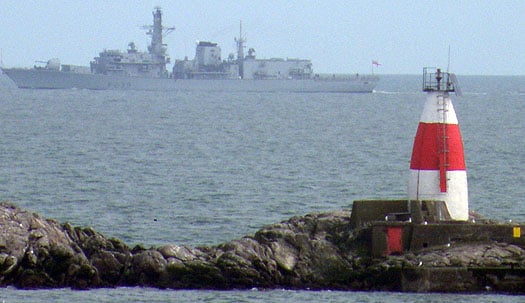Displaying items by tag: TV advert campaign
#Ex007inDalkey- Pierce Brosnan, the Irish born actor and former 007 James Bond, caused quite a stir on the first day of March in Dalkey. The actor was on a location shoot and was understood to be making a TV advert campaign with scenes from the south-side suburb and at Coliemore Harbour, writes Jehan Ashmore.
Dalkey which is well known for its famous string of celebrities, had greeted the Navan born actor's presence with a distinct buzz in the Spring air, as the cameras rolled at the scenic coastal location facing out to Dalkey Island.
For the shoot Brosnan stood at the public viewing area above the harbour, where there is a binocular-scope which is dedicated in the memory of the life and work of the late Dr. John de Courcy Ireland.The former Dalkey resident, was a maritime historian, teacher and linguist and who is widely regarded as the 'father' of Maritime Ireland.
Brosnan played Bond between 1995-2004 during which four films were produced. It was in his second outing as Bond in 'Tomorrow Never Dies' that a Royal Navy frigate, fictitiously named HMS Devonshire made a brief appearance. The frigate was sunk in the South China Sea by a stealth ship, instigated by the evil media mogul magnate Elliot Carver, head of the Carver Media Group Network (CMGN).
By an uncanny coincidence, only a couple of hours before the shoot at Coliemore Harbour took place, HMS Richmond (F239) a sister of the frigate that played the role in the film (in real life HMS Somerset), had sailed past The Muglins lighthouse off Dalkey Island. As previously reported, HMS Richmond, a Duke class frigate was bound for Dublin Port for a courtesy call over the weekend.

007 signs autographs for Dalkey fans. Photo: Gail Bonass

HMS Richmond passes the Muglins on Dublin Bay. Photo: Jehan Ashmore
Brosnan's visit to Dalkey was certainly a surprise for locals and tourists alike and will no doubt assist in boosting visitor numbers. By another coincidence on the same day, the town's Heritage Centre on Castle Street, the main street of the former port town for Dublin during medieval times, reopened after completion of a major upgrade of the visitor centre.
Unlike the former Bond's notable presence, HMS Richmond slipped quietly out of Dublin Bay today. Having said that, could there be a connection!....According to yesterday's Irish Times –The Social Network column, among his next film projects is 'November Man', an espionage movie. He quoted "...the stage is big enough for Daniel and myself".
























































